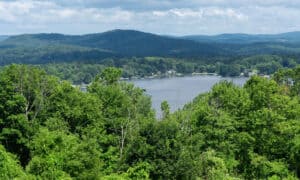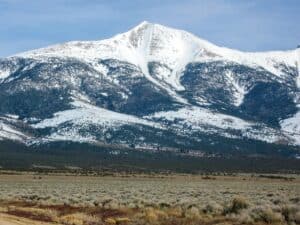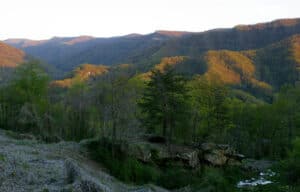Many folks around the world dream of exploring the mountain ranges of Washington State. From incredible hiking trails along viable paths to some of the most intimidating climbs in the country (even world), the mountains offer some of the most beautiful views in the country. Let’s explore the mountain dangerous mountains in Washington to learn more.
What’s the Difference Between Hiking and Mountaineering?
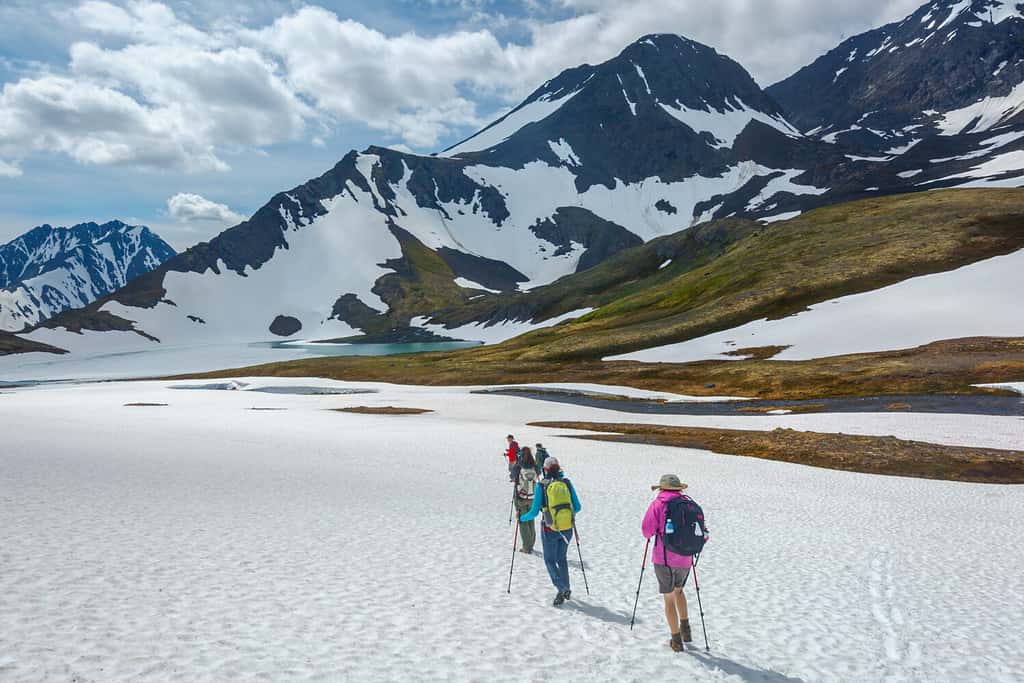
Hiking may be done by amateurs safely. Mountaineering, on the other hand, should never be attempted without extensive training.
©Damon Shaw/Shutterstock.com
Depending on where in the country you live, your definition of “hiking” may be drastically different from someone else’s. A Midwesterner, for example, could call exploration of the trails in the Cook County Forest Preserve a “hike.” While folks from Colorado likely would roll their eyes at the idea.
Hiking could be defined as a long walk through nature ranging anywhere from a couple of hours to a full day. Trekking is usually the term applied to longer journeys on foot through natural areas, often taking days or even weeks. Mountaineering, though, is an extreme version of trekking that includes summiting a mountain.
Examples:
- Hiking — Spending a day hiking through the forests of Illinois.
- Trekking — Backpacking for a couple of days along the Appalachian Trail.
- Mountaineering — Heading up Mount Everest with full protective gear for extreme activity and cold.
What Makes a Mountain Dangerous?
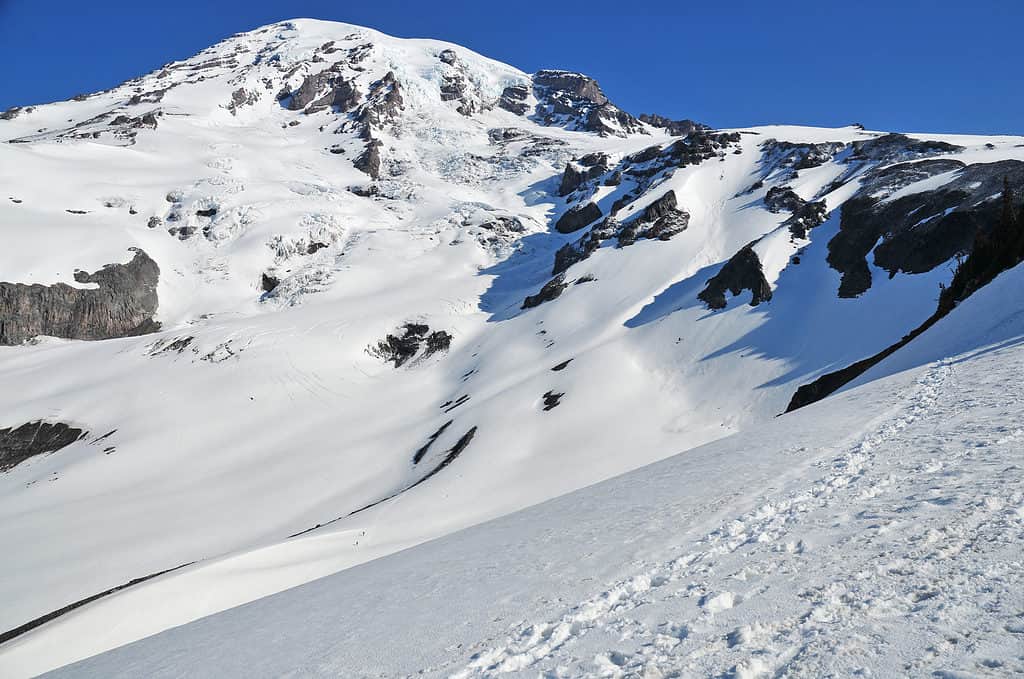
Mt. Rainier has many great ski slopes and hiking opportunities. But it isn’t a “safe” mountain by any stretch.
©nyker/Shutterstock.com
Before considering any of the above activities, it’s important to understand what you could be getting into. For some, there’s a thrill about seeking the most dangerous mountain. For others, it’s about understanding their own limitations and where to trek or hike and where not to.
Understanding what makes a given mountain dangerous could be the difference between an enjoyable afternoon on the trail and fighting for your life.
Between 1947 and 2018, mountaineering accidents involving 2,800 people were reported, over 40% of those resulted in deaths. Typically, it is the climbers, not the hazards of the mountain, that have caused the accidents.
Let’s take a look at some of the hazards found on mountains in Washington State.
Types of Hazards
Two types of hazards exist in mountaineering: objective and subjective. Objective hazards come from the mountain and terrain itself; subjective hazards are human based.
Falling
Perhaps the most obvious hazard on the mountainside could be noted as falling. It’s certainly the most common danger out there and probably the one most feared by mountaineers, hikers, and climbers.
Avalanches
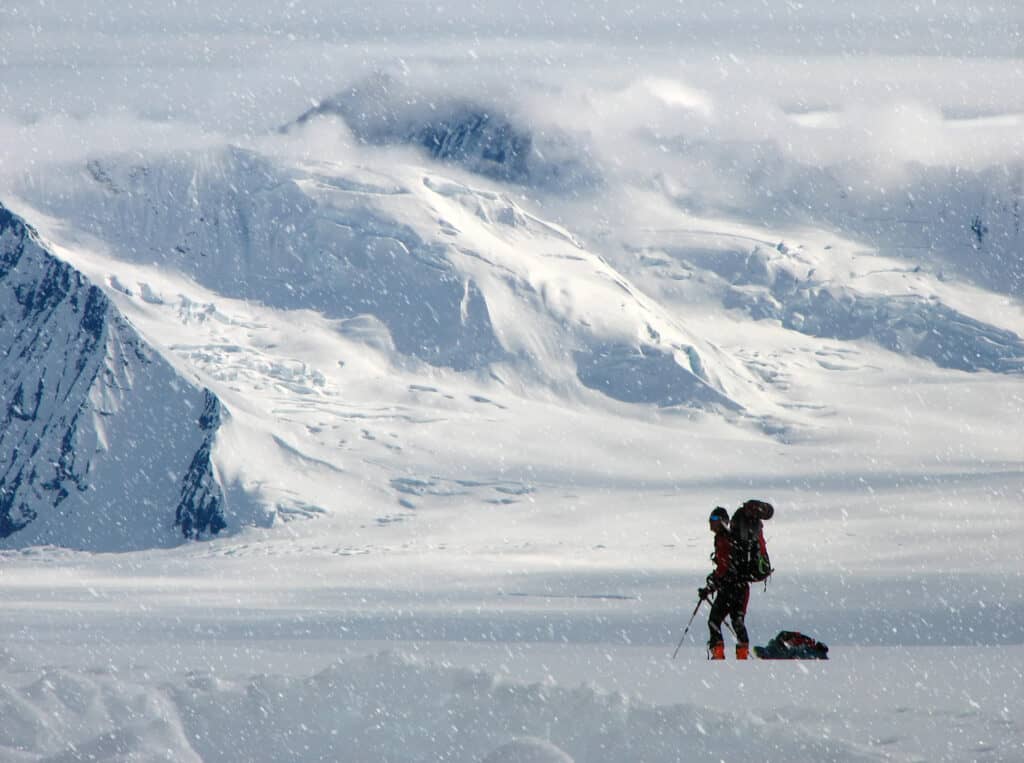
The types of avalanches include loose snow, slab avalanches, powder snow, and wet snow avalanche.
©Avatar_023/Shutterstock.com
While inexperienced hikers and climbers might think of avalanches as rare, they may strike at any time. Even the most skilled of mountaineer may be killed by an avalanche. Frequently, however, climbers don’t prepare for the possible hazard, which puts them at greater risk.
Weather Patterns
Weather conditions atop mountain peaks shift quickly and may cause severely dangerous situations for climbers. Sudden rain, snow, or severe winds may come without warning and create extreme hazards for climbers.
Hypothermia
No matter how experienced you may be, spending too long in extreme cold may result in hypothermia. Ultimately, this results in the body shutting down and eventual death, unless the condition is resolved.
Altitude Sickness
There’s a reason you feel light-headed when you hike into the mountains. The oxygen levels are lower and it’s more difficult to breathe fully. This is known as altitude sickness when it becomes severe. Fever-like symptoms may follow and result in poor decision making.
Exposure
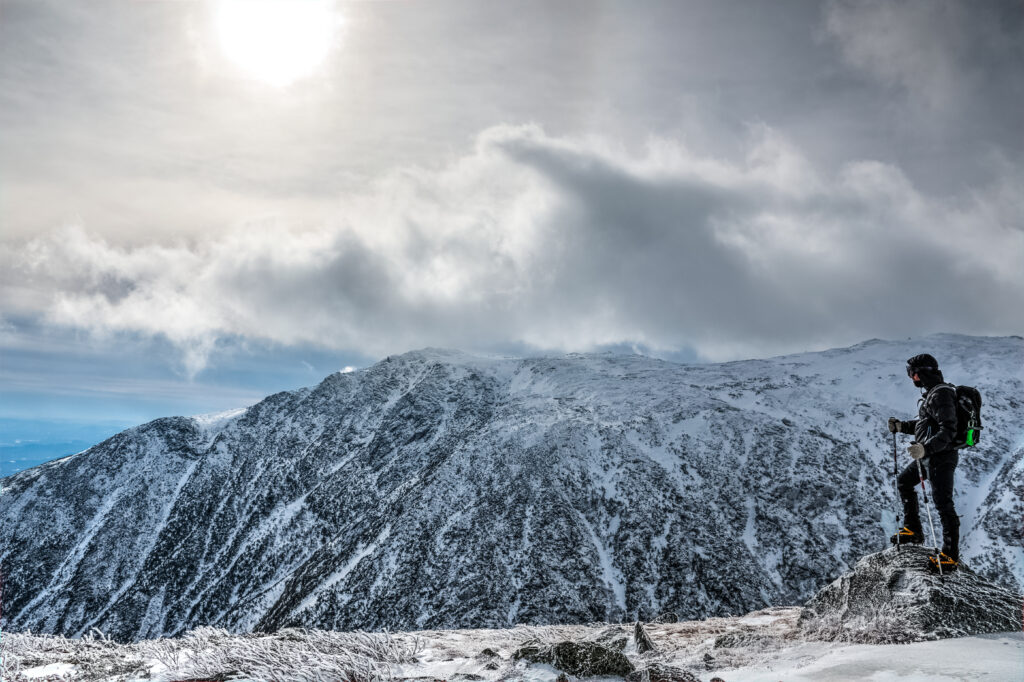
Extreme weather may cause severe issues, even death, for mountaineers.
©David Boutin/Shutterstock.com
Many hours out on the mountain face, whether sunny or cold, may result in exposure. Too high heat may result in heat stroke; freezing whether could result in hypothermia or other cold-related conditions.
Pulmonary Edema
Pulmonary edema is a more severe and specific type of altitude sickness which results in blood building up in the lungs. The result, at such high altitudes, away from medical care, usually is death.
Cerebral Edema
More severe yet than, cerebral edema is the building up of blood in the brain. This, too, results in death when you’re far from medical care.
Exhaustion
Though it may seem less significant on this list than others, like cerebral edema, exhaustion may easily lead to death. How? Through an impairment in judgment, weakness or body, or combination of the two.
Rockfall or Icefall
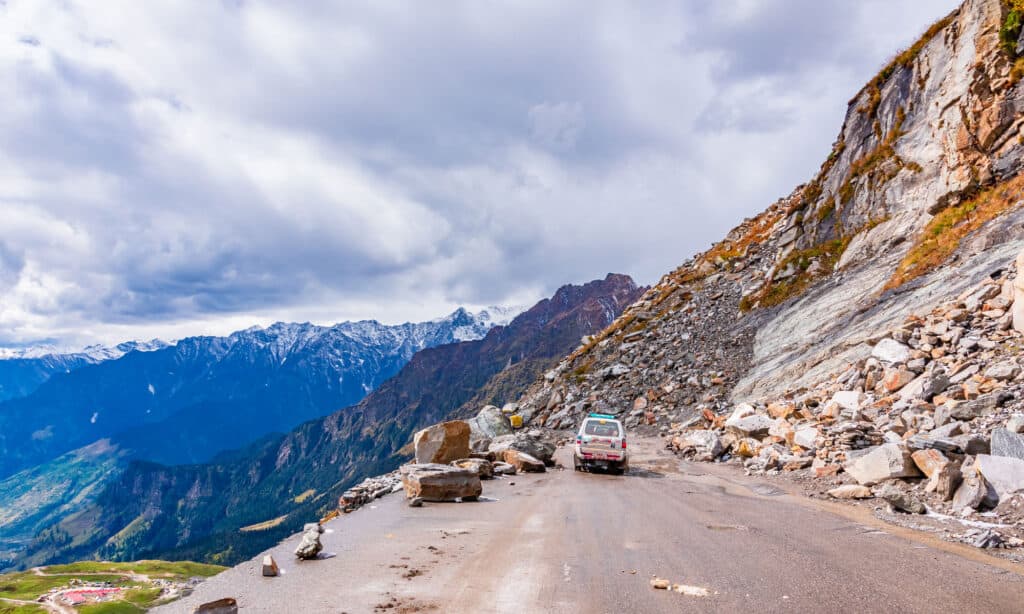
Rockfall at any point may be dangerous — but particularly when climbing.
©Amit kg/Shutterstock.com
Erosion, rapid temperature changes, and other weather conditions may cause either rockfall or icefall. Being struck by either may easily result in death. Or, being situated where you are vulnerable to the rock or ice that falls, you will fall with it.
Snow Blindness
Bright sunlight reflecting off the snow may well cause snow blindness. This results in a temporary loss of vision and often results in accidents.
Broken Equipment
Occasionally, equipment may break while you’re on the ascent or descent. It’s rare, but not unheard of. Be sure to check the integrity of all equipment before considering a summiting expedition.
Crevasses
Glaciers may crack and split, opening into crevasses. Climbers have been known to disappear into the crevasses and lost their lives on many occasions.
Navigational Errors
Many mountain climbing routes are poorly marked and require significant skill and accuracy in route-finding. A wrong turn on the path may well result in a fall, injury, or worse.
Injury
Exerting the human body across uneven and dangerous terrain often results in injuries. A twisted ankle, broken bone, head injury, or other injury could well result in death.
Should You Consider Climbing a Dangerous Peak?
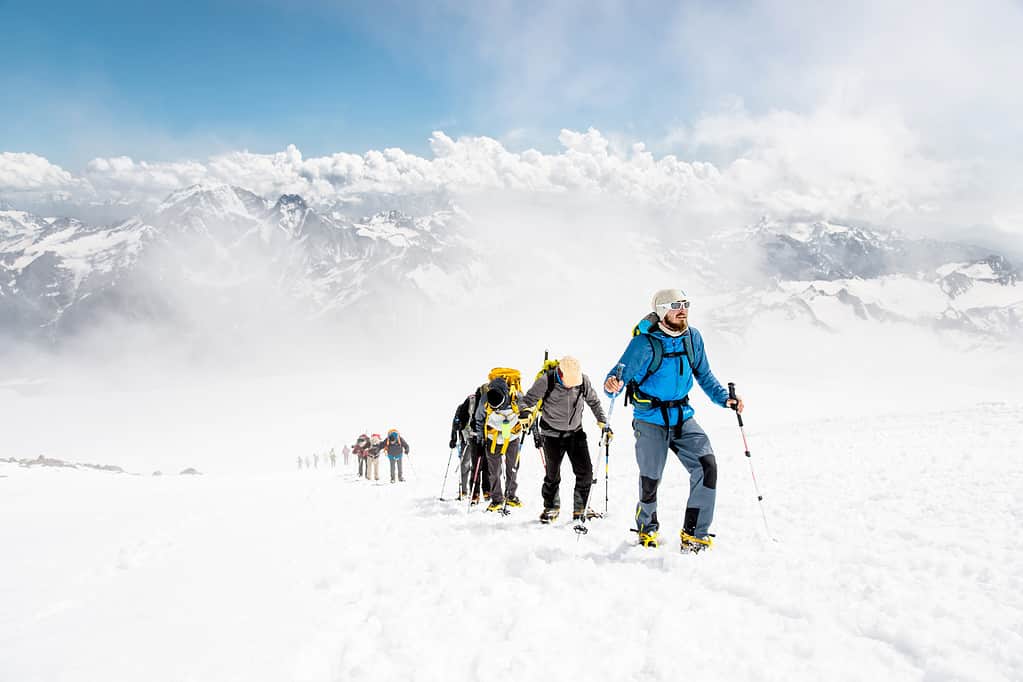
Group of mountaineers head out.
©yanik88/Shutterstock.com
If you are a highly experienced, well-trained, expert in mountaineering, seeking the ascent of some of the most dangerous mountains may be viable. If, however, you lack these things, attempting to ascend any of the following mountains or others would likely result in death or severe injury.
Instead, receive the training and experience needed. Or simply enjoy a safer trail suitable to your skill level.
Worst Avalanche in Washington State History
For those unfamiliar with mountaineering trends, it may be a surprise to learn that most years, at least 1 or 2 people lose their lives to avalanches in the Evergreen State.
The deadliest avalanche in the state’s history came in February 1910. A severe blizzard hit Wellington and ultimately created circumstances that resulted in 96 total deaths related to the avalanche.
The most recent deadly avalanche fell in February 2023, killing 3 of 6 climbers ascending Colchuck Peak.
Most Dangerous Mountains in Washington
Home to some 3700 names mountains, Washington State is considered one of the most mountainous states in the United States. The most famous, of course, is Mount Rainier, which is also the most prominent and the highest in the state.
Many of the mountains in the state are suitable for inexperienced hikers and novice mountaineers to cut their teeth on, but many, including some of the most well-known peaks, are too dangerous for most semi-experienced mountaineers to try. The list below includes those with the most known accidents, avalanches, and hardest ascents.
Middle Peak, Mount Index
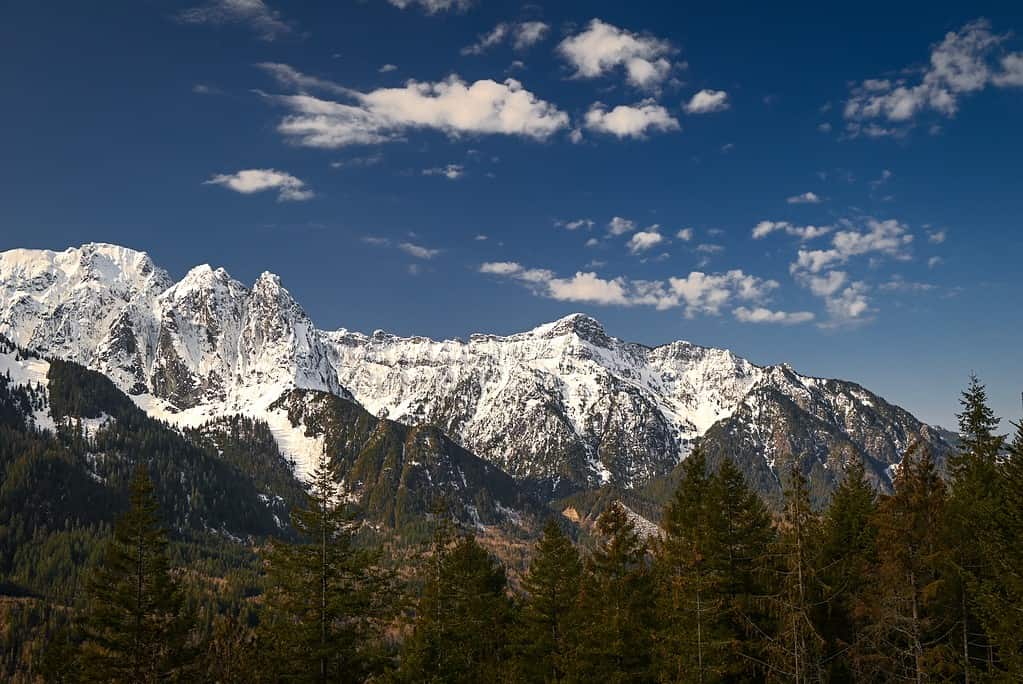
Mount Index in Washington State is one of the most dangerous mountains in the Pacific Northwest.
©Zhongxing Lu/Shutterstock.com
Regarded as the hardest summit in all of Washington State, Middle Index (the Middle Peak of Mount Index) is inaccessible for the inexperienced. Even for the most experienced mountaineers, the peak is considered a serious, dangerous climb. The most feasible on the range, you must have technical experience, route-finding abilities, and proper gear to climb. The Index Traverse involves constant exposure at over 4000 feet on either side and extensive 5.9 climbing on rock. There’s virtually no protection along much of the climb and retreat is not an option. “Finishing or death” or an airlift are seen as the ways down this mountain. Access to the mountain may be gained via the west Mount Persis, the east side of the mountain, or via the Proctor Creek drainage.
Nooksack Tower, Mount Shuksan
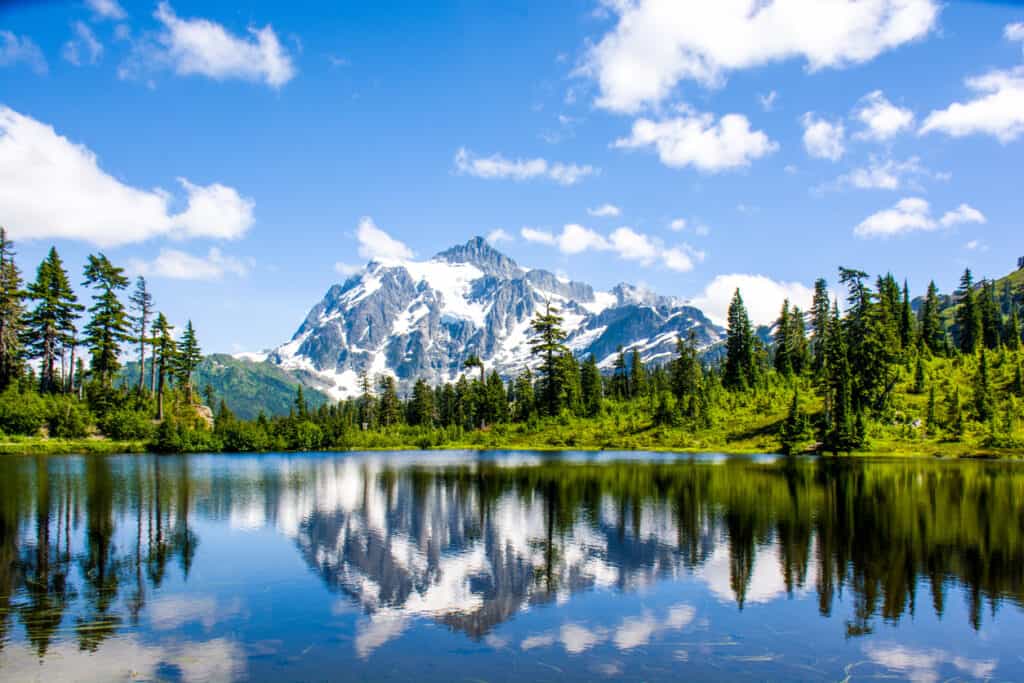
Mt. Shuksan in North Cascades National Park, Washington is highly dangerous.
©iStock.com/SoisudaS
With dangerous, loose rocks and prone to avalanches, Nooksack Tower, a sub-peak of Mount Shuksan, is one of the most dangerous mountains in Washington State. A climb over 60+ degree snow, many pitches of loose class 3 to 5.6 rock, and many other intense, dangerous hazards keep most folks away. You’ve got to have loads of genuine experience to summit this peak, particularly experience with loose rock. The mountain itself is a glaciated massif in the North Cascades National Park. It’s 11.6 miles south of the Canada-US border and situated immediately east of Mount Baker. The name of the mountain (Shuksan) literally means “high peak” in the Lummi language.
Inspiration Peak, Picket Range
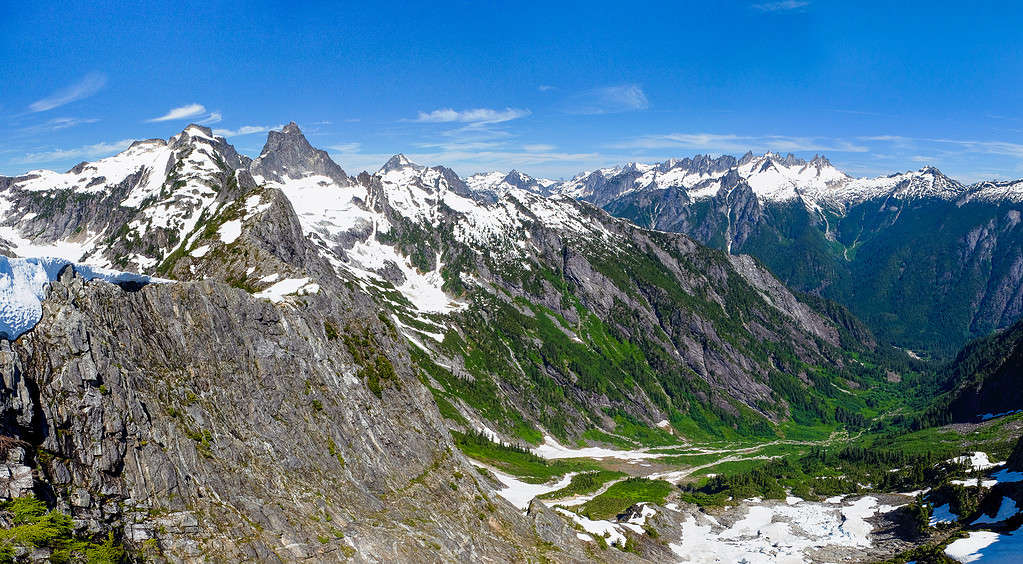
Inspiration Peak in Picket Range requires multiple days to conquer.
©Tobin Akehurst/Shutterstock.com
Situated in the heart of the Picket Range, Inspiration Peak is considered a remote peak. A multi-day approach is necessary for reaching the peak in the North Cascades National Park. The fact that it is a highly technical peak, requiring significant equipment and experience, not many have sought to summit. The easiest known route for reaching the peak is via the 5.6 west ridge with loose rock. Inspiration Peak hits 7,880+ feet in altitude and is located east of Mount Degenhardt and west of McMillan Spires. The first known ascent of the peak was in 1940 by Fred Beckey and his brother Helmy Beckey via the west ridge.
Lincoln Peak, Mount Baker
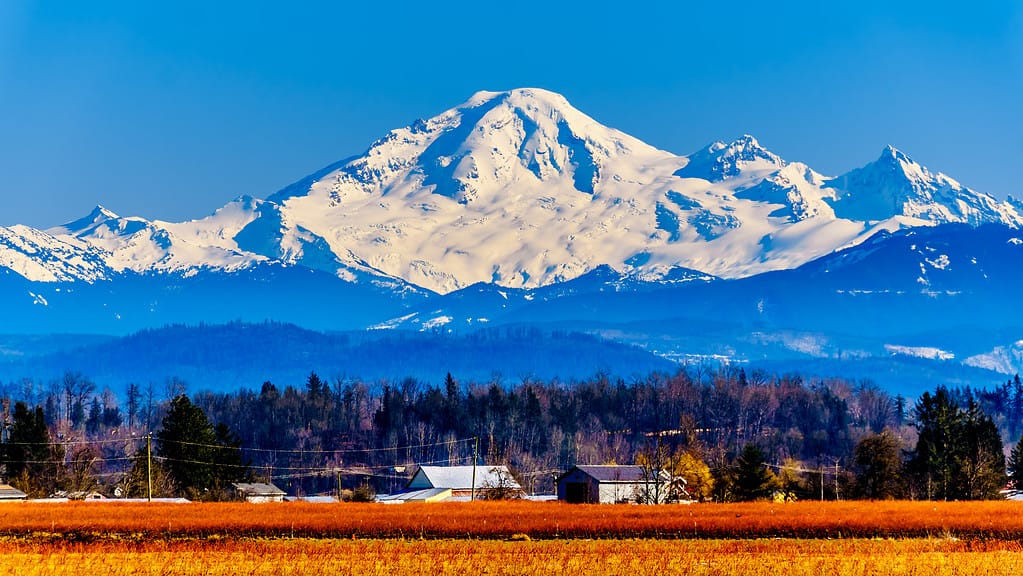
Mount Baker is visible from Seattle and cities in Canada.
©Harry Beugelink/Shutterstock.com
Not for the faint of heart, Lincoln Peak is a subsidiary peak of Mount Baker, a range visible from Seattle. To climb this beast, you’ve got to be proficient in sustained climbing up 60+ degree snow and ice. Climbing season for the peak is unusually short, going only from late spring to early summer. During this time, the snow is in its only climbable condition. The route is south facing, though, with rock and ice fall at significant and frequent danger levels, particularly at sunup. Recommended ascent time for the peak is during the night, which means you’ve got to know the route intimately and have the proper light gear to survive. If you aren’t already on your descent shortly after sunrise, you’re in trouble. A calm, cloudy day may also make the climb possible, but not recommended.
Liberty Ridge, Mount Rainier
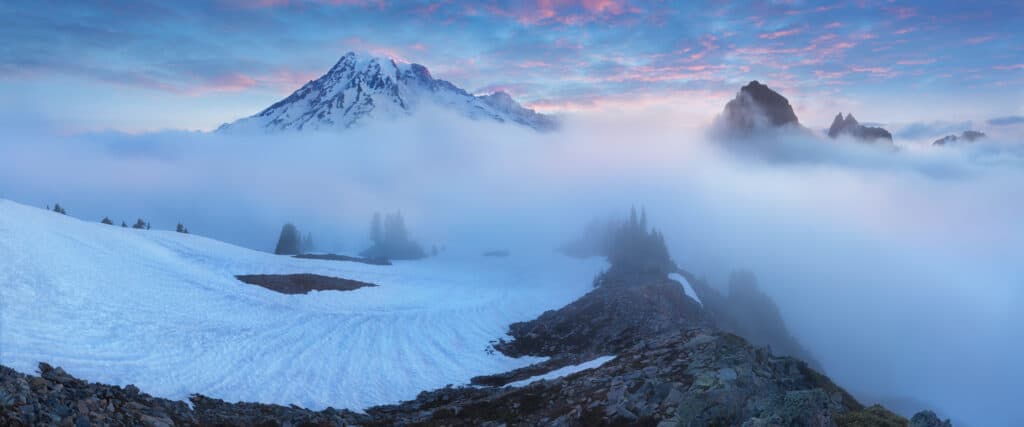
Hundreds of people have died on Mount Rainier.
©Michal Balada/Shutterstock.com
Considered one of the top deadliest mountains in the entire country, the famed Mount Rainier has drawn in folks of all climbing levels. The beautiful mountain seems “safe” to many because of the familiarity, but the mountain is actually incredibly dangerous. Multiple routes are dangerous, but many consider Liberty Ridge the worst in recent years, with statistics of accidents, weather patterns, avalanches, and others confirming. Avalanches and falling are the most reported major dangers of the route. The mountain is also an active volcano and so volcanic activity creates additional issues for those ascending. Weather patterns shift quickly, which also creates for snowfall, slipping, and avalanches more frequently. At least 400 people are known to have lost their lives climbing Mount Rainier.
South Peak, Hozomeen Mountain
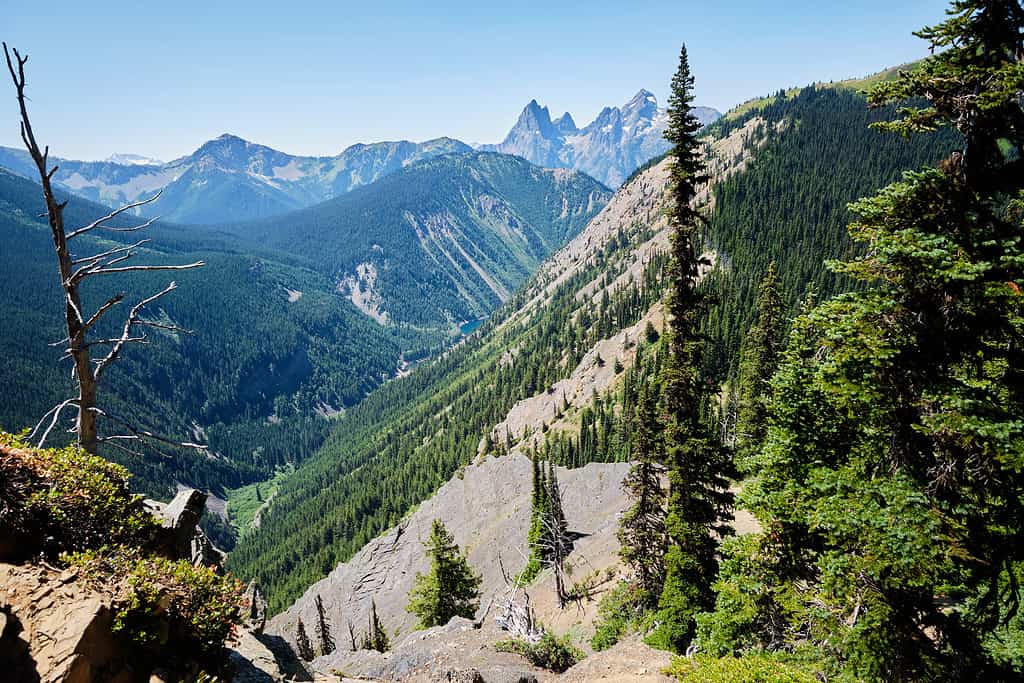
Hozomeen Mountain in the distance is located in the North Cascades.
©Anne08/Shutterstock.com
A double-summited rock peak mountain, Hozomeen is located on the east side of Ross Lake in the North Cascades. The large, steep drops from both summits make the mountain one of the most dangerous in the state, despite the modest absolute elevation. The remote peaks are usually traversed to be ferry service up Ross Lake for easier access before a potentially deadly climb. The South Peak is considered the more dangerous of the two, though neither would be deemed “safe” or “easy” by any mountaineer. Exposed, loose climbing is the primary method of ascent, over loose rock.
West Peak, Mount Fury
Higher than the east peak by mere feet, the West Peak of Mount Fury is considered the far more dangerous of ascents. Some have deemed this climb the most remote of all in the lower 48 and exceptionally challenging even for the most experienced mountaineers. The east peak is more commonly frequented because of the significant difference in ease. However, the “easiest” way to traverse to the west peak is suggested as climbing the east peak and then climbing the 5.6 route over rock to the west.
North Face, Burgundy Spire, Silver Star Massif
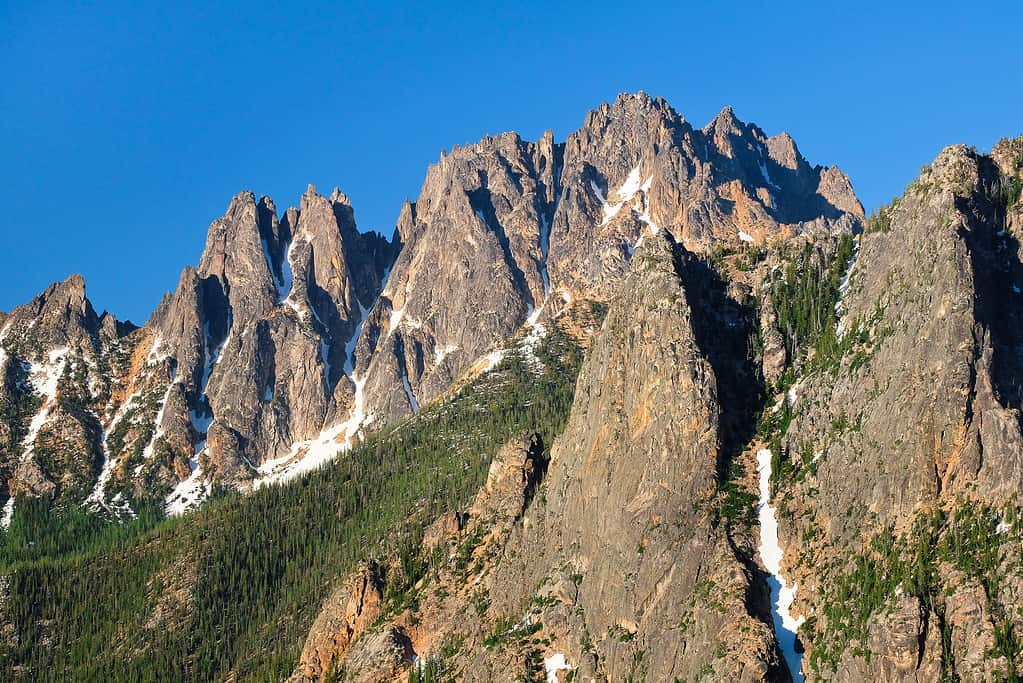
The incredible Wine Spires of Washington provide challenges to climbers.
©Tobin Akehurst/Shutterstock.com
Situated near Washington Pass, the Burgundy Spire belongs to the many towers known locally as the Wine Spires. The mountain is rocky, with “superb” rocks deemed highly enjoyable. However, up to 10 challenging pitches of 5.8 climbing gets you to the summit. The North Face specifically is one of the most technically challenging summits within the North Cascades. The easiest route to the summit would be a 5.8 route.
Johannesburg Mountain
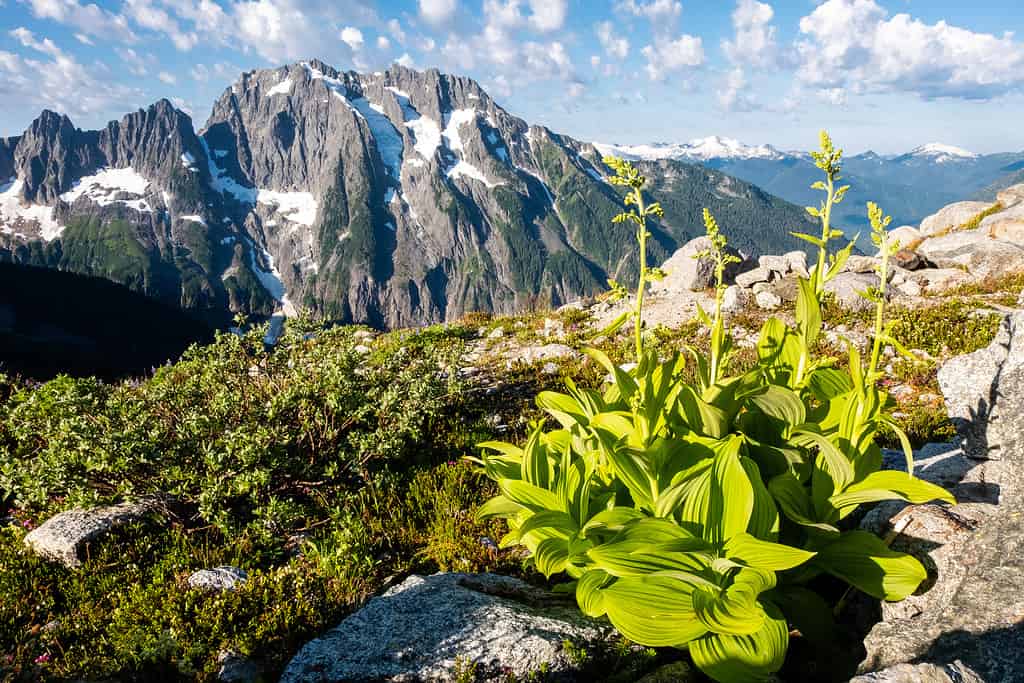
Johannesburg Mountain is on the danger list of Washington.
©Tobin Akehurst/Shutterstock.com
A stand alone peak, the Johannesburg Mountain makes the list of most dangerous peaks in Washington State. The massive mountain towers above the Cascade Pass in North Cascades National Park, with the north face showing as one of the most striking visuals in the country. A handful of routes up to the peak may be traversed, with a 5.7 route NE Rib. The approach is challenging but short from the Cascade Pass Trailhead.
North Peak, Mount Index
The Middle Peak of Mount Index is exceptionally dangerous, as is the North Peak. The Mount Index massif sits below 6000 feet in elevation, but it has a 5.6 rated route on the north face. The low elevation fools some into thinking the climb would be easier and less dangerous, but it remains one of the most challenging in the state.
Hard Mox, Twin Spires (or Mox Peaks)
The Hard Mox peak requires rock climbing abilities on the 5.7 route. The rugged summit is reputed as the seventh most difficult summit in the state, with many considering it the hardest on the Bulger list of 100 peaks. A multi-trek, the approach comes from Canada along rough roads, glacier travel, water crossings, steep snow, and complicated route-finding. The peak requires rock climbing skills, as well.
The photo featured at the top of this post is © Tobin Akehurst/Shutterstock.com
Thank you for reading! Have some feedback for us? Contact the AZ Animals editorial team.



